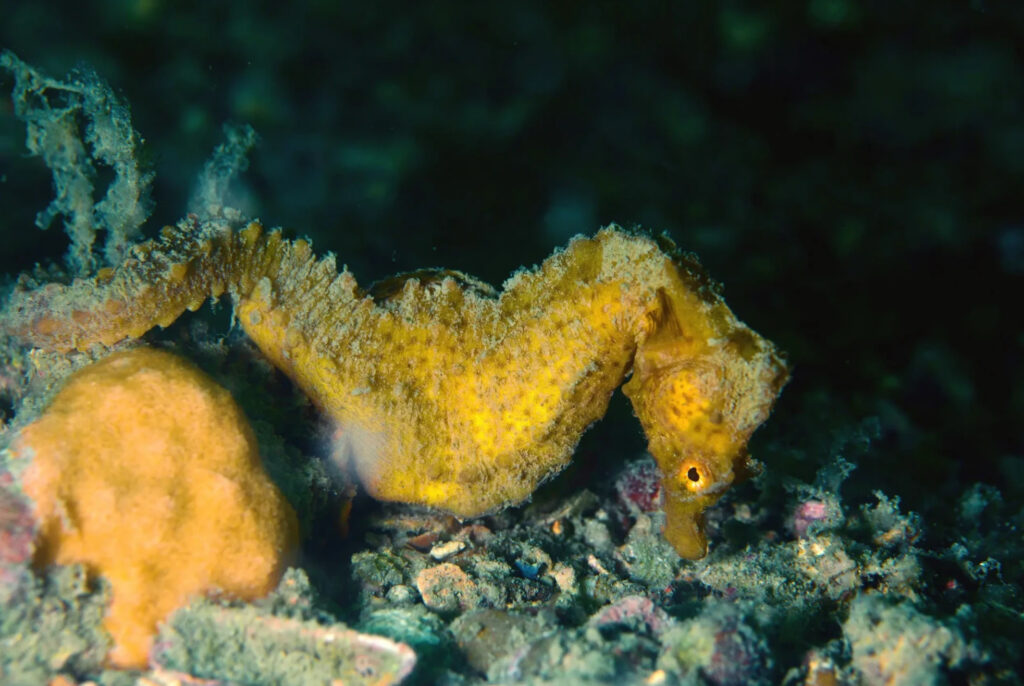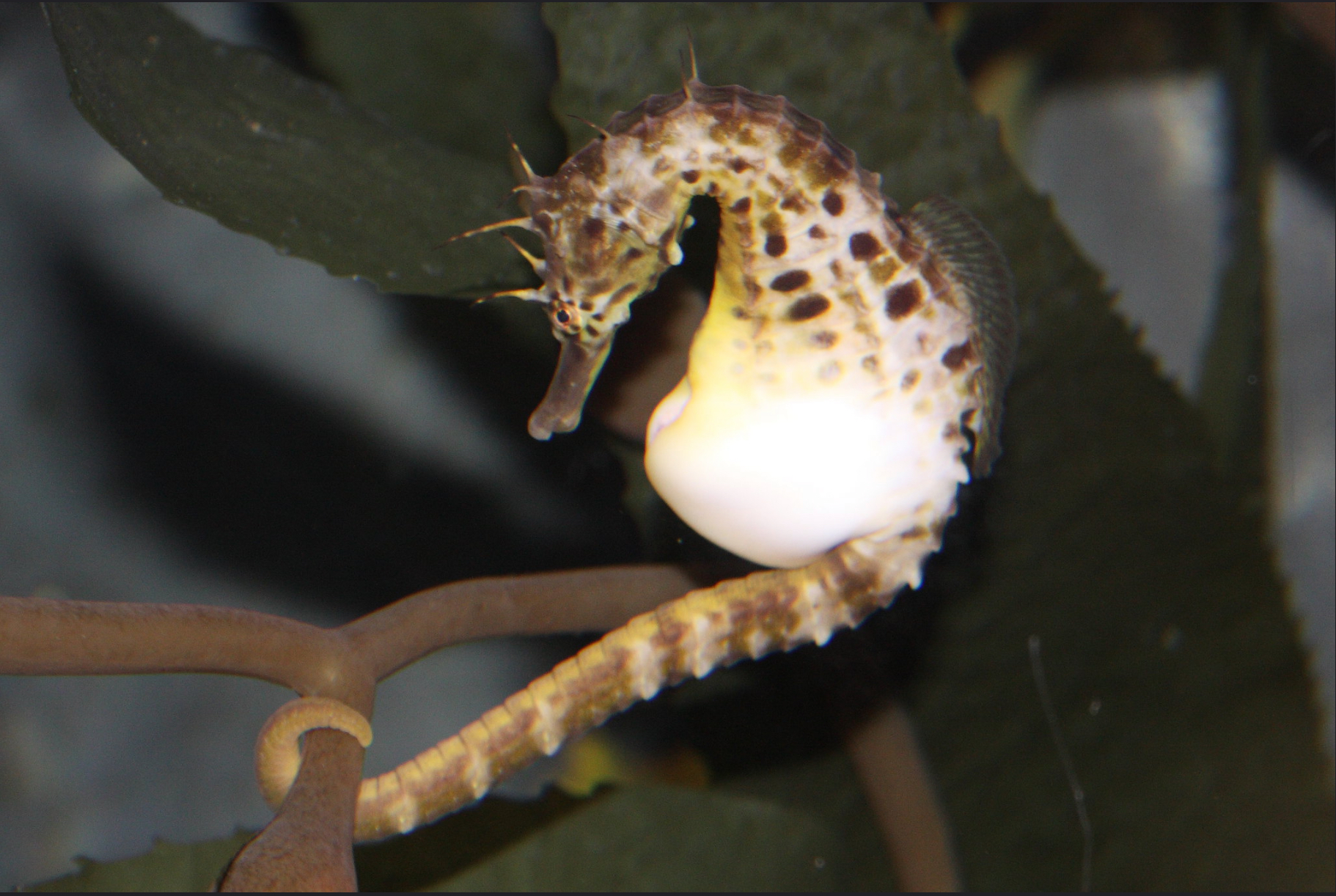In the animal kingdom, pregnancy is almost always the responsibility of the female. However, nature is full of exceptions and one of the most remarkable outcomes happens beneath the ocean’s surface. In the water, exists a species that requires the males to carry and birth the offspring. With horse-shaped heads, spiny bodily plates and curved tails, this species is better known as the seahorse.
Seahorse reproduction begins with an elaborate mating dance that can last up to nine hours. During this courtship dance, the male and female will spin, swim side by side and even change colors. Once the pair has synchronized through this ritual, the female will deposit the eggs outside of her body. She does this through a special structure called the ovipositor. This is a tube-like feature that allows the female to transfer her eggs into the male’s brood pouch. This entire transfer process occurs quickly and takes up to six seconds. For egg storage, the male has a specialized organ known as a brood pouch. This pouch is typically located on the abdomen of male seahorses and it is used to protect, grow and provide nutrients to growing offspring. Depending on the species, the pregnancy of a male seahorse can last anywhere from 10 to 25 days. During this time they could be fertilizing and holding up to 2,000 offspring at a time.

“Short-snouted seahorse” by Silke Baron from Vienna, Austria, licensed under CC BY 4.0.
At the end of the pregnancy, the male seahorse will go into labor. Prior to doing so, the male will focus on finding a safe area to hide to ensure the safety of his offspring. When the time has come he will undergo cramp-like contractions, much like other forms of labor. He will propel his offspring out of his brood pouch by pumping and thrusting with each contraction. During this time he can release up to several thousand embryos. Most of the young average to be about 8-10 mm at birth. Once the young seahorses enter the water, they will be fully independent and will no longer receive parental care. Due to this, only about 0.5 percent of the offspring will survive to adulthood. With the completion of this process, the male will begin the mating cycle once again. This mating ritual has made seahorses one of the ocean’s most fascinating creatures. Consistently reminding society that even the rules of nature can be rewritten.
Featured image shows “Dad to be: Pregnant Seahorse” by Owen Evans, licensed under CC BY 2.0.
